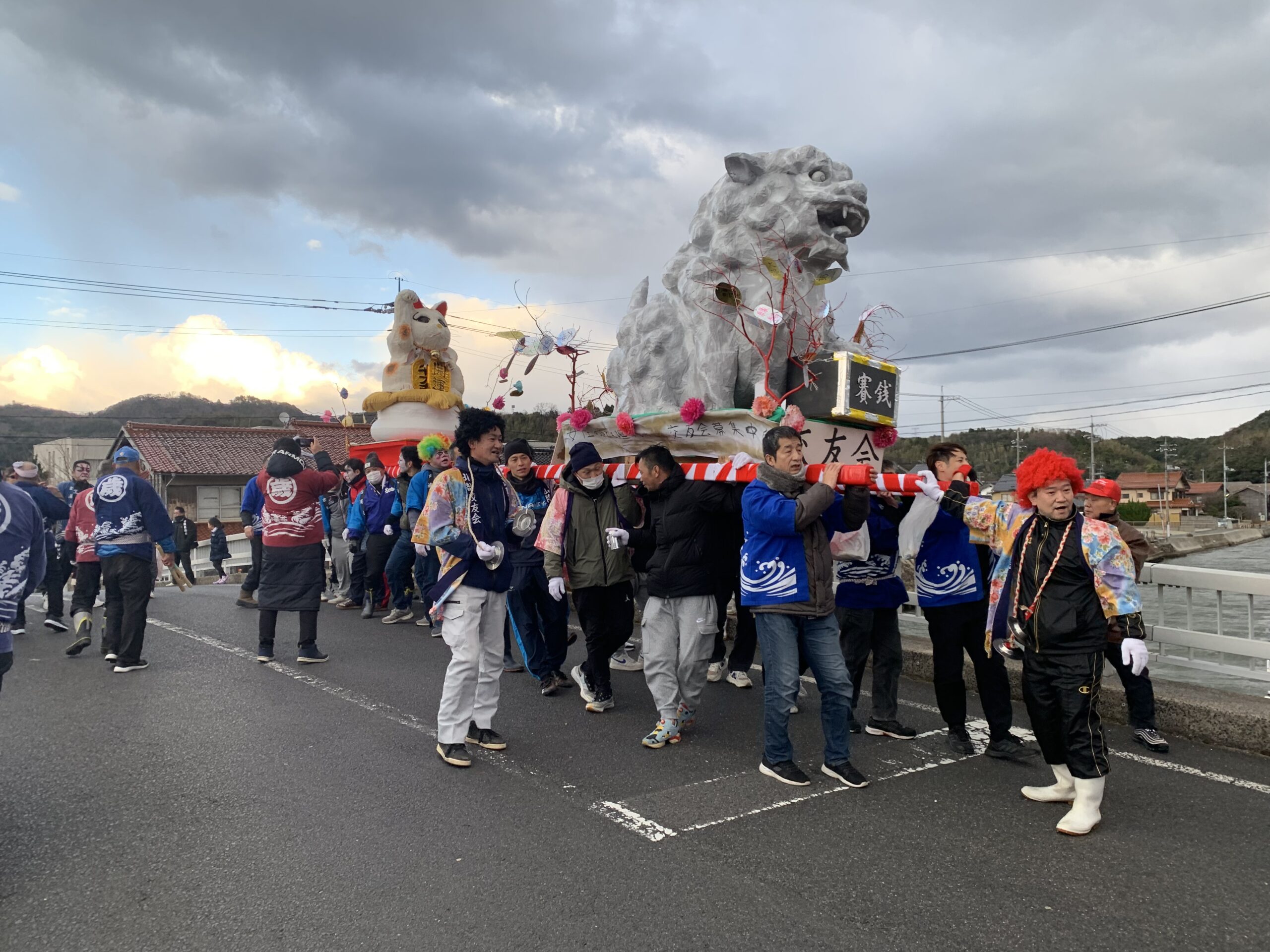Kashima – Making a full-scale comeback for the first time in five years, the annual Sagicho parade in the Etomo and Koura fishing hamlets of Kashima, Matsue City, enchanted on 3 January attendees once more (last year, only Koura carried out the event, but it only becomes formal when both Etomo and Koura are together). This revered ceremony, aimed at welcoming the New Year’s goddess, took place under sombre grey winter skies, with icy winds blowing in from the Sea of Japan. Despite the cold, the portable shrines and children’s drum carts from both districts, walking through the streets in both villages, drew significant attention from onlookers.
This event, brimming with district pride, saw children leading the Toshitokujin—revered as the year’s lucky direction goddess—pulling a resplendent treasure boat and carrying the portable shrines of the Toshitokujin. The procession moved through the fishing hamlets, accompanied by bells, flutes, lions, and the Shinto hymn Wakamatsu. This tradition, which has endured for approximately 250 years, prays for a prosperous catch and good health in the coming year.
A key highlight was the event’s climax at Minato Bashi Bridge, the boundary between the two districts. Bearers, dressed in traditional happi coats and makeup, sipped sake from kettles, sang Wakamatsu, and performed dynamic demonstrations on the bridge to the audience’s delight. In earlier times, these spirited displays sometimes led to brawls due to the influence of sake. Auspicious performances also took place in front of houses where congratulatory gifts were given, spreading happiness to the households. The usually tranquil fishing villages sprang back to life, reminiscent of their vibrant past.
The name Etomo is after the local myth. It says the god Ihasanahiko, a son of Susanoo, whilst making an inspection tour over the land, said, ‘This land is young and beautiful. It is shaped like a painted shoulder piece. I would like to build my shrine here.’ Thus, it was named Etomo, meaning painted shoulder piece.
Whilst the origin of the name Koura is unknown, it boasts a beautiful beach. During the Edo period, the fishing village thrived as a hub for sea salt production along with Etomo. However, with Japan’s modernisation, the area’s focus shifted towards fishing, which has since declined. Despite these changes, the tradition of swimming at Koura Beach, affectionately known as Hama, remains steadfast.
Etomo and Koura fishing hamlets are located north of the Shimane Peninsula, and Japan’s efficient transportation system makes getting to them convenient and straightforward. For those who want to savour the journey, the Sunrise Izumo sleeper train offers a delightful 12-hour ride from Tokyo to Matsue Station. With private cabins and scenic views, it’s a luxurious option for travellers. The roundtrip ticket costs approximately 50,000 yen ($450), and a more budget-friendly bunk bed option is also available. At Matsue Station, travellers must transfer to Etomo by bus; it takes 15 minutes to walk to Koura Beach.
If speed and comfort are your priorities, the bullet train is an excellent choice. The trip takes about eight hours, and you’ll need to transfer from Okayama Station to the local limited express Yakumo, which goes directly to Izumo Station. However, travellers need to disembark at Matsue Station, requiring a bus transfer to Etomo. It takes 15 minutes to walk to Koura Beach. The roundtrip fare for this option is below 40,000 yen, making it an affordable and convenient choice.
For travellers who prefer the flexibility of a car, renting one near the station is also an option. Matsue’s transportation options ensure that tourists have various choices to suit their preferences and budget, making the journey to both hamlets and the beautiful places in Shimane Prefecture a pleasant and accessible experience.
( Words by Takashi Saito )

